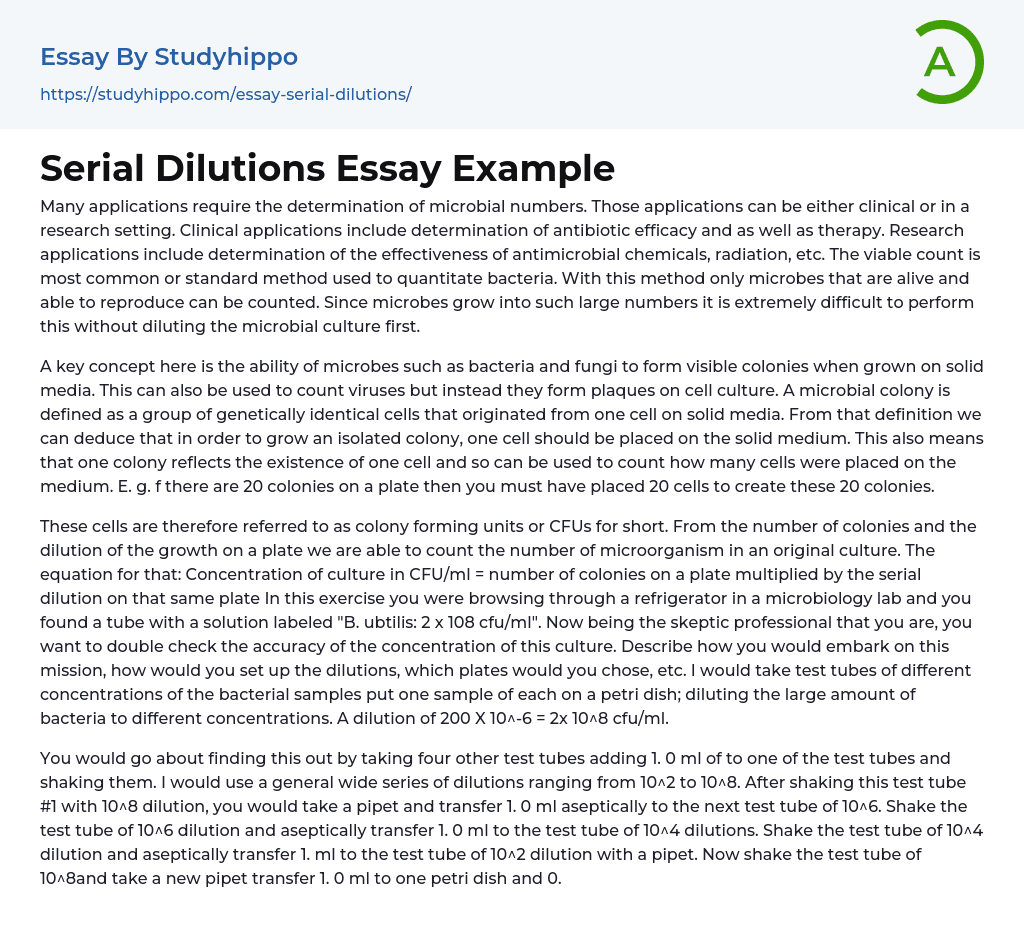Both clinical and research applications often need to determine the quantity of microbes. This determination is crucial for assessing antibiotic effectiveness, therapy in clinical settings, as well as the efficiency of antimicrobial chemicals and radiation in research settings. The viable count method is commonly employed to quantify bacteria, specifically counting only living and reproducing microbes. However, performing this method without diluting the microbial culture is highly challenging due to the rapid growth of microbes.
The concept of visible colonies on solid media is important for microbes such as bacteria and fungi. Viruses, on the other hand, form plaques when cultured with cells. A microbial colony refers to a group of genetically identical cells that originated from a single cell on solid media. Therefore
..., in order to cultivate an isolated colony, a single cell must be placed on the solid medium. Furthermore, the number of colonies can be used to determine how many cells were initially placed on the medium. For instance, if there are 20 colonies present on a plate, it indicates that 20 cells were initially deposited to produce those 20 colonies.
The cells referred to as colony forming units or CFUs are of interest. By counting the colonies and considering the dilution on a plate, we can determine the quantity of microorganisms in the original culture. The formula to calculate this is: Concentration of culture in CFU/ml = number of colonies on a plate multiplied by the serial dilution on that same plate. In this case, you come across a tube labeled "B. ubtilis: 2 x 108 cfu/ml" inside a microbiology lab refrigerator. As an skeptical professional, your goa
is to verify the accuracy of this culture's concentration. To do so, you would create dilutions using test tubes with different concentrations of bacterial samples and place one sample from each tube onto a petri dish. This process involves diluting the large amount of bacteria into various concentrations, where a dilution rate of 200 X 10^-6 will result in 2x 10^8 cfu/ml.
To determine the concentration of the culture, begin by adding 1.0 ml of the culture to a test tube and shaking it. Create a range of dilutions from 10^2 to 10^8 by transferring 1.0 ml of the previous dilution to each subsequent test tube and shaking them. After shaking the test tube with a 10^8 dilution, transfer 1.0 ml to a test tube with a 10^6 dilution using a pipet. Shake the test tube with a 10^6 dilution and transfer 1.0 ml to the test tube with a 10^4 dilution. Shake the test tube with a 10^4 dilution and transfer 1.0 ml to the test tube with a 10^2 dilution, using a pipet.
Next, shake the test tubes as follows:
- With a starting concentration of 108, transfer 1.0 ml to one petri dish and 0.1 ml to another petri dish using;a new pipet.
- With;a starting concentration of 106, repeat this process for petri dishes.;
- With;a starting concentration of [STARTING CONCENTRATION], repeat this process for;[PETRI DISHES].
Mix agar with the contents of each petri dish, allowing it time to cool and harden.Once hardened, count plates containing between25-250 colonies.This method is usedto verifythe accuracyofthe culture'sconcentration.
+
- Organic Chemistry essays
- Acid essays
- Calcium essays
- Chemical Bond essays
- Chemical Reaction essays
- Chromatography essays
- Ethanol essays
- Hydrogen essays
- Periodic Table essays
- Titration essays
- Chemical reactions essays
- Osmosis essays
- Carbohydrate essays
- Carbon essays
- Ph essays
- Diffusion essays
- Copper essays
- Salt essays
- Concentration essays
- Sodium essays
- Distillation essays
- Amylase essays
- Magnesium essays
- Acid Rain essays
- Pregnancy essays
- Death essays
- Asthma essays
- Chronic Pain essays
- Diabetes essays
- Infection essays
- Infertility essays
- Pain essays
- Sexually Transmitted Disease essays
- Cholesterol essays
- Epidemic essays
- Pathogen essays
- Symptom essays
- Water supply essays
- Myocardial Infarction essays
- Chronic essays
- Hypertension essays
- Black Death essays
- Breast Cancer essays
- Down Syndrome essays
- Apoptosis essays
- Tuskegee Syphilis Experiment essays
- Type 2 Diabetes essays
- Agriculture essays
- Albert einstein essays
- Animals essays




